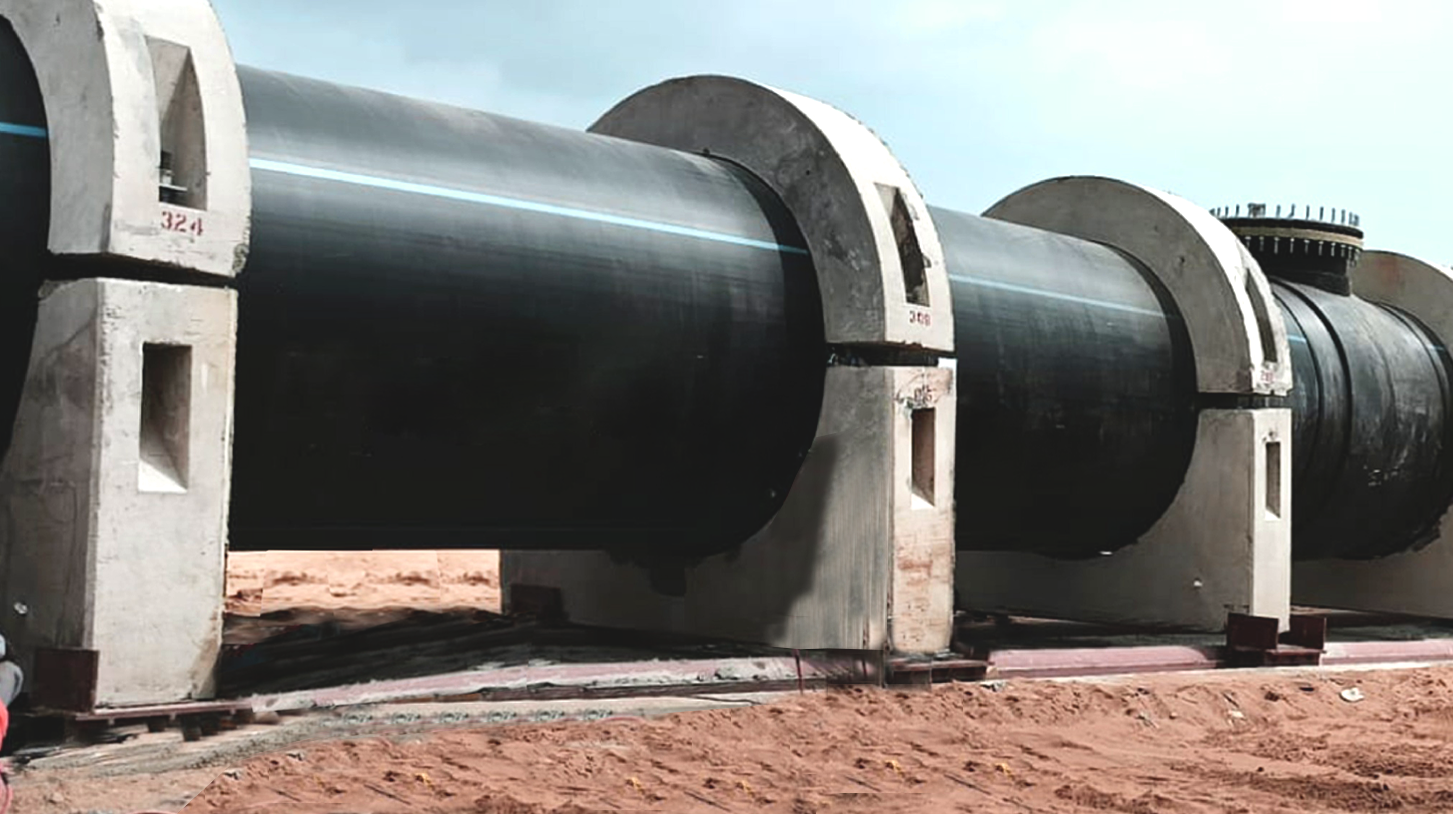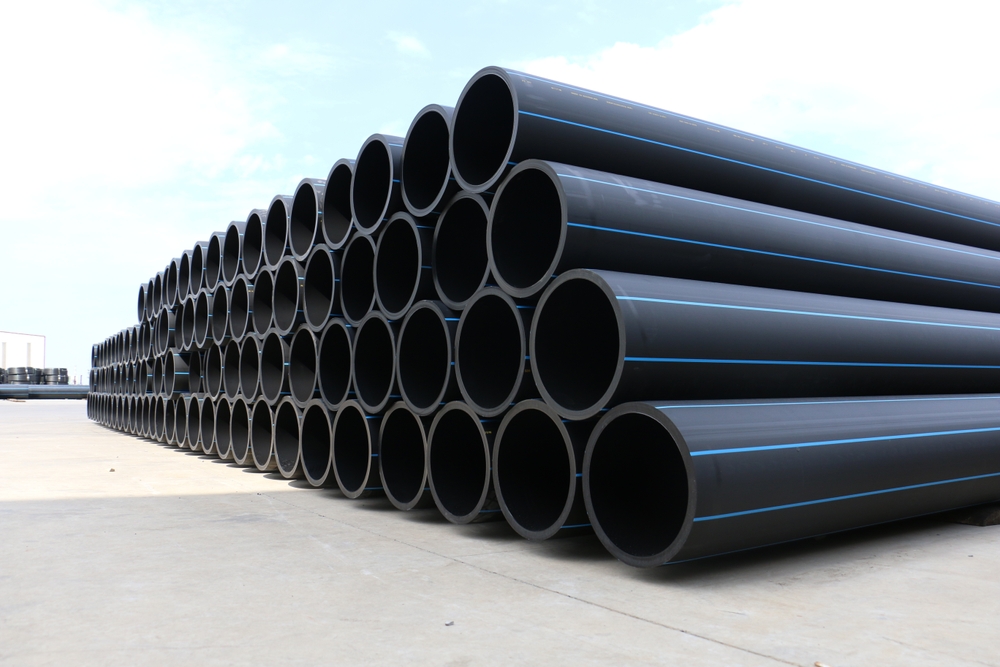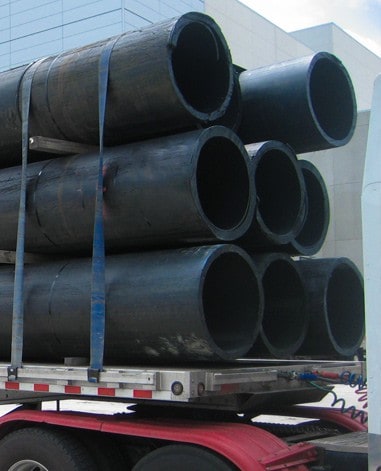How American Plastics HDPE Pipe Manufacturing Maintains High Standards
Wiki Article
Discover the Manufacturing Process Behind High-Quality HDPE Pipeline and Its Applications
The production process of premium HDPE pipes is detailed and methodical. It begins with the option of resources that boost efficiency. Following this, ethylene undergoes polymerization to form material, which is then shaped with extrusion. Quality assurance is critical, making certain that the last product meets strict requirements. However, the journey of HDPE pipes does not end with manufacturing. Their applications throughout different industries expose a more comprehensive value worth checking out.Understanding HDPE: Residences and Advantages

High-density polyethylene (HDPE) is a flexible polycarbonate recognized for its toughness and resistance to numerous ecological elements. This material shows outstanding tensile stamina, making it appropriate for requiring applications. Its low-density structure adds to a light-weight product, helping with simplicity of dealing with and installment. HDPE additionally showcases exceptional resistance to chemicals, which lessens degradation when revealed to severe compounds.
The material's reduced wetness absorption even more boosts its long life, making it ideal for use in pipelines and storage containers. Furthermore, HDPE is resistant to ultraviolet (UV) radiation, making certain that products keep their honesty even when subjected to sunlight. Furthermore, its adaptability enables the development of complex shapes without endangering stamina. The green nature of HDPE, typically obtained from recycled materials, includes in its charm, promoting lasting methods in production. Generally, these homes and benefits make HDPE a favored option for different commercial and consumer applications.
Raw Product Choice for HDPE Production
The choice of resources for HDPE manufacturing is vital to verify the end product fulfills the desired requirements and top quality requirements. High-density polyethylene (HDPE) is largely produced from polymerized ethylene, obtained from nonrenewable fuel sources such as all-natural gas or petroleum. The quality of these feedstocks greatly influences the mechanical and thermal homes of the final HDPE.Additives additionally play a considerable duty in boosting HDPE's efficiency, consisting of anti-oxidants, UV stabilizers, and colorants, which boost durability and resistance to ecological aspects. The choice process should think about not only the chemical make-up of the raw materials yet also their handling characteristics to ensure efficient manufacturing.
Furthermore, the sourcing of resources need to prioritize sustainability and compliance with environmental guidelines, as responsible practices are important in today's market. Eventually, careful raw material selection lays the structure for generating high-grade HDPE pipes suitable for diverse applications.
The Extrusion Process: Forming HDPE Pipe
The extrusion process plays an important function fit HDPE pipes, starting with thorough product preparation strategies that ensure ideal circulation and consistency. Just as crucial is the design of the die, which directly affects the last dimensions and surface area quality of the pipeline. Together, these aspects contribute substantially to the performance and quality of HDPE pipeline production.Material Preparation Methods
Effective manufacturing of HDPE pipes begins with thorough product prep work techniques, specifically the extrusion procedure. Throughout this stage, high-density polyethylene material is very first dried out to get rid of wetness, ensuring suitable circulation qualities. The resin is then fed right into the extruder, where it undertakes home heating and melting, changing right into a viscous state. This home heating procedure is thoroughly managed to preserve the product's integrity and performance. The molten HDPE is compelled via a die, forming it right into a continual pipe kind. Proper temperature administration during extrusion is essential, as it straight influences the material's properties and the end product top quality. Once shaped, the HDPE pipe is cooled down and cut to specified lengths, prepared for succeeding handling and applications.Die Style Importance
Accuracy in die design plays an important role in the extrusion process of HDPE pipelines. The die works as the last shaping device, straight influencing the pipeline's dimensions, wall surface density, and surface finish. A properly designed die guarantees consistent product flow, decreasing problems such as irregularities and vulnerable points. The geometry of the die must be optimized to accommodate the details residential properties of HDPE, including its thickness and thermal actions throughout extrusion. Additionally, the cooling price of the product as it travels through the die can significantly impact the pipeline's architectural integrity. Spending in sophisticated die technology is vital for manufacturers aiming to generate high-quality HDPE pipelines that meet sector requirements and client assumptions.High Quality Control Steps in HDPE Manufacturing
Although numerous elements influence the top quality of HDPE pipeline production, efficient quality control actions are critical to assure uniformity and integrity in the end product. Key top quality control practices include rigorous material inspection, verifying that the raw polyethylene satisfies well-known standards for pureness and density. During the extrusion process, specifications such as temperature level, stress, and cooling time are closely kept track of to maintain dimensional precision and architectural honestyOn top of that, post-production screening is vital; producers commonly conduct hydrostatic tests to assess the pipeline's strength and resistance to pressure. Visual examinations for surface area issues additionally improve quality control. Accreditation from relevant standards organizations, like ASTM or ISO, offers an added layer of reliability. By applying these thorough quality assurance actions, makers can lessen flaws, improve efficiency, and make certain that the HDPE pipes satisfy the certain demands of different applications, ultimately leading to customer contentment and count on in the product.
Applications of HDPE Pipeline Across Industries
HDPE pipelines are made use of throughout numerous fields as a result of their sturdiness and flexibility. In water distribution systems, they assure efficient delivery, while in wastewater management, they supply trusted remedies for waste transport. Additionally, agricultural watering networks benefit from HDPE's resistance to corrosion and adaptability, making it an optimal option for modern-day farming methods.
Water Distribution Systems
A substantial number of markets rely upon high-density polyethylene (HDPE) pipelines for efficient water distribution systems. Understood for their toughness and resistance to deterioration, HDPE pipelines are commonly used in local water system networks, farming watering, and commercial applications. Their lightweight nature helps with easy handling and installment, decreasing labor expenses and time. In addition, HDPE pipes can accommodate various pressure degrees, making them suitable for both low and high-pressure systems. hdpe pipe suppliers Midland TX. The flexibility of the material permits seamless combination into existing facilities, decreasing the requirement for substantial excavation. HDPE's resistance to chemical seeping warranties that the water provided continues to be safe and clean, making it an optimal selection for maintaining the high quality of safe and clean water across different industries.Wastewater Monitoring Solutions
Reliable water distribution systems likewise pave the way for cutting-edge wastewater management solutions, where high-density polyethylene (HDPE) pipes play a significant function. Distinguished for their toughness and resistance to deterioration, HDPE pipes are ideal for carrying wastewater in different settings. Their versatility enables for simple installation in complicated atmospheres, lessening the need for considerable excavation. Furthermore, HDPE's smooth interior surface minimizes friction, enhancing flow rates and efficiency. These pipelines are likewise immune to chemical leaching, guaranteeing that contaminants do not endanger the surrounding environment. Industries, municipalities, and treatment centers progressively depend on HDPE pipes for their integrity and durability, making them a favored selection for modern wastewater administration systems. This flexibility emphasizes the important significance of HDPE pipelines across various applications.Agricultural Watering Networks
Agricultural watering networks benefit considerably from using high-density polyethylene (HDPE) pipelines, which supply efficient and reputable water delivery to plants. HDPE pipes are lightweight, making them very easy to carry and set up, while their adaptability enables different configurations in varied terrains. These pipelines show outstanding resistance to rust, chemicals, and UV radiation, ensuring sturdiness in severe agricultural environments. Additionally, their smooth indoor surface area reduces rubbing loss, optimizing water circulation and lowering energy prices connected with pumping. The long life of HDPE pipelines, often surpassing half a century, adds to lower upkeep and substitute costs. Farmers increasingly depend on HDPE pipes to boost watering efficiency and promote sustainable farming techniques, inevitably leading to improved plant returns and resource conservation.
Future Fads in HDPE Pipe Innovation
As the need for sustainable and reliable facilities expands, innovations in HDPE pipeline technology are poised to transform various markets. Emerging patterns include the assimilation of clever innovations, such as sensors and IoT capacities, which facilitate real-time tracking of pipe conditions, minimizing upkeep prices and preventing leakages. Additionally, the advancement of advanced manufacturing strategies, such as 3D printing, is making it possible for the manufacturing of complicated, personalized pipeline layouts that accommodate details job demands.In addition, the focus on recycling and round economy techniques is driving the development of HDPE pipes hdpe pipe suppliers Midland TX made from recycled materials, improving sustainability. Boosted jointing approaches, such as electro-fusion and mechanical installations, are also enhancing installation efficiency and reliability. Lastly, the expanding focus on environmental policies is pressing makers to adopt greener production procedures, ensuring that HDPE pipelines not just meet market standards yet additionally promote an even more lasting future for framework growth.
Frequently Asked Inquiries
How Does HDPE Contrast to Various Other Plastic Products?
HDPE outperforms lots of other plastic materials pertaining to resilience, chemical resistance, and adaptability. Its reduced density and high tensile toughness make it suitable for numerous applications, commonly going beyond choices in both performance and durability.What Are the Ecological Effects of HDPE Manufacturing?
The environmental influences of HDPE production include greenhouse gas emissions, energy intake, and prospective pollution from producing procedures. Additionally, inappropriate disposal can bring about soil and water contamination, elevating problems concerning long-lasting eco-friendly impacts.Can HDPE Pipes Be Reused?
Yes, HDPE pipelines can be reused. Many centers approve utilized HDPE for processing, changing it right into new products. This recycling adds to sustainability initiatives, minimizing plastic waste while saving resources and energy in the production cycle.What Is the Life-span of HDPE Pipeline?

Exactly How Do Temperature Level Variations Affect HDPE Pipeline Performance?
Temperature variants substantially affect HDPE pipeline efficiency, influencing flexibility and toughness. High temperature levels can bring about softening, while reduced temperature levels may cause brittleness, ultimately affecting the pipeline's toughness and suitability for numerous applications in diverse environments.Report this wiki page